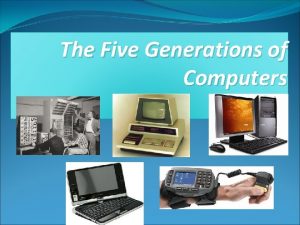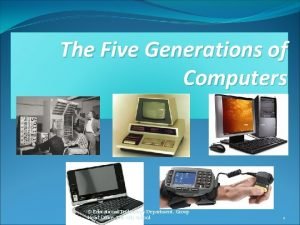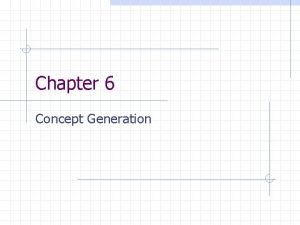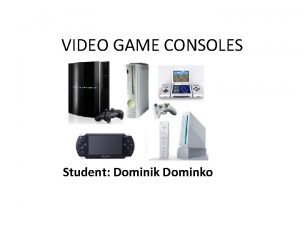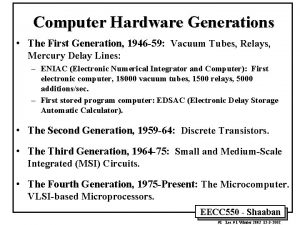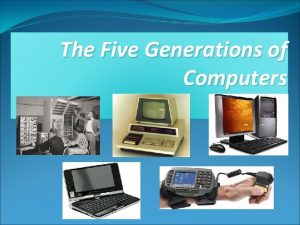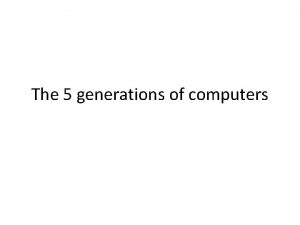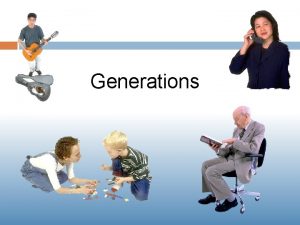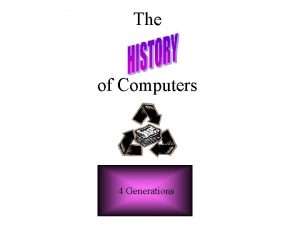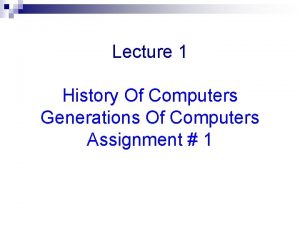THE FIVE GENERATIONS OF COMPUTERS First generation computers













- Slides: 13

THE FIVE GENERATIONS OF COMPUTERS

First generation computers (1940 -1956) The first computers used vacuum tubes for circuitry and magnetic drums for memory. They were often enormous and taking up entire room. First generation computers relied on machine language. (Low level Language). They were very expensive to operate and in addition to using a great deal of electricity, generated a lot of heat, which was often the cause of malfunctions. The UNIVAC and ENIAC computers are examples of first-generation computing devices.

vacuum tubes

UNIVAC Short for Universal Automatic Computer, the UNIVAC I, a trademark of the Unisys corporation, was released in 1951 and 1952 when first developed by J. Presper Eckert. The UNIVAC is an electrical computer containing thousands of vacuum tubes that utilizes punch cards and switches for inputting data and punch cards for outputting and storing data. The UNIVAC was later released the UNIVAC II, and III with various models, such as the 418, 490, 491, 1100, 1101, 1102, 1103, 1104, 1105, 1106, 1107, and 1108. Many of these models were only owned by a few companies or government agencies.

First generation computers In the above public domain picture is an example of what the UNIVAC computer looked like. As can be seen in the picture, this is a room-sized computer and often required multiple people to operate

Second generation computers (1956 -1963) • • Transistors replaced vacuum tubes in the second generation of computers. Second-generation computers moved from cryptic binary machine language to symbolic. High-level programming languages were also being developed at this time These were also the first computers that stored their instructions in their memory.

Second generation computers

Third generation computers (1964 -1971) The development of the integrated circuit was the hallmark of the third generation of computers. Transistors were minimized and placed on siliconchips, called semiconductors. Instead of punched cards and printouts, users interacted with third generation computers through keyboards and monitors and interfaced with an operating system. Allowed the device to run many different applications at one time.

Third generation computers

Fourth generation computers (1971 -present) The microprocessor brought the fourth generation of computers, as thousands of integrated circuits were built onto a single silicon chip. The Intel 4004 chip, developed in 1971, located all the components of the computer. From the central processing unit and memory to input/output controls—on a single chip. . Fourth generation computers also saw the development of GUIs, the mouse and handheld devices.

Fourth generation computers

Fifth generation computers (present and beyond) Fifth generation computing devices, based on artificial intelligence. Are still in development, though there are some applications, such as voice recognition. The use of parallel processing and superconductors is helping to make artificial intelligence a reality. The goal of fifth-generation computing is to develop devices that respond to natural language input and are capable of learning and self-organization.

Fifth generation computers
 What are the five generation of computer
What are the five generation of computer First-generation computer
First-generation computer Stahl
Stahl 4th generation of computer
4th generation of computer This generation of computers used transistors
This generation of computers used transistors Second generation of computer
Second generation of computer Oh lord you are good and your mercy endureth forever
Oh lord you are good and your mercy endureth forever Concept combination table
Concept combination table First generation gaming consoles
First generation gaming consoles What are third generation rights
What are third generation rights Generation of computer hardware
Generation of computer hardware Mark of the four waves
Mark of the four waves 3rd generation cephalosporin
3rd generation cephalosporin Sulfonylurea drugs
Sulfonylurea drugs
